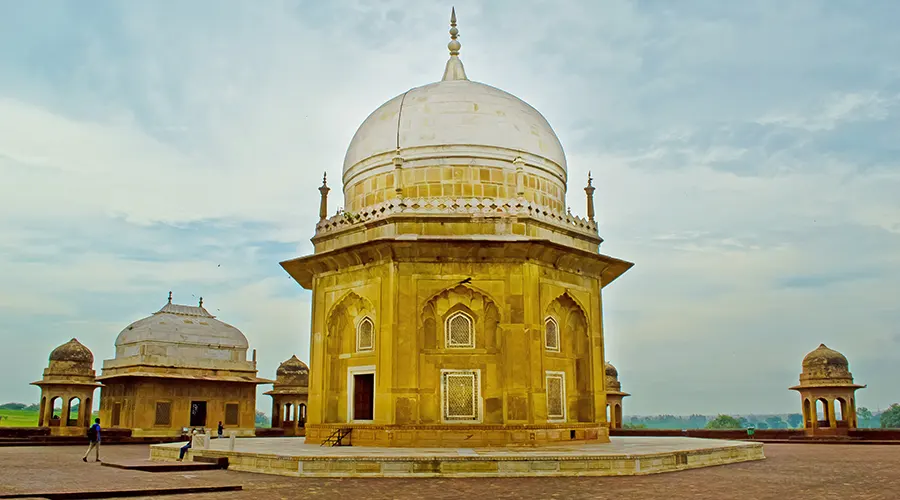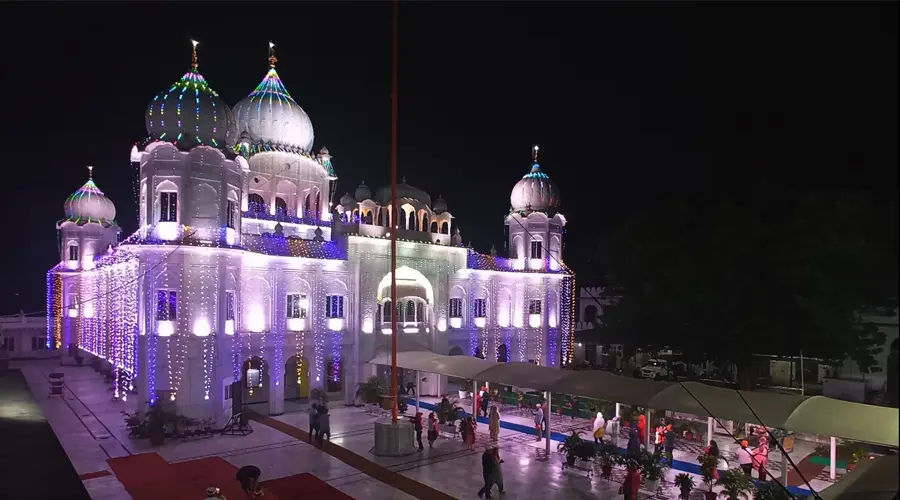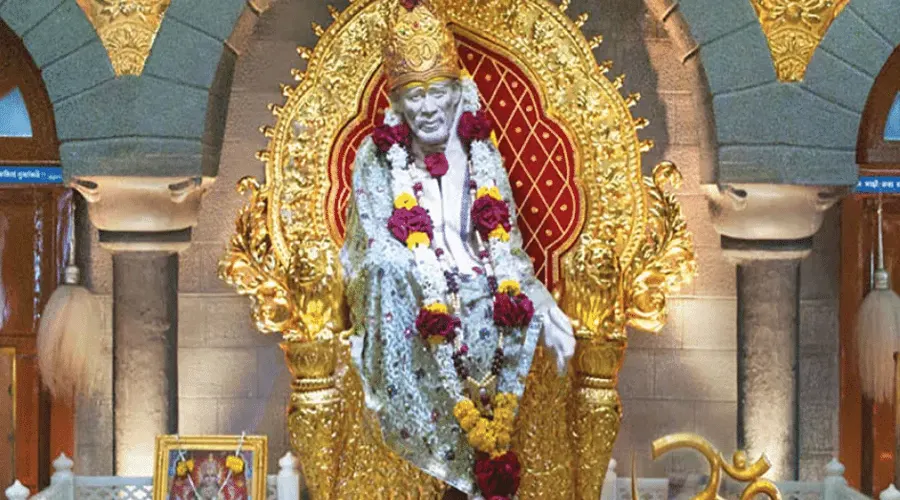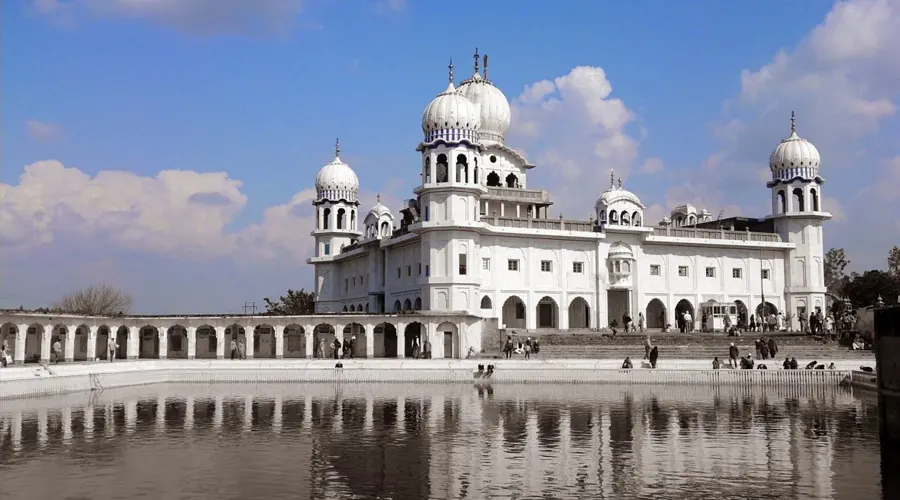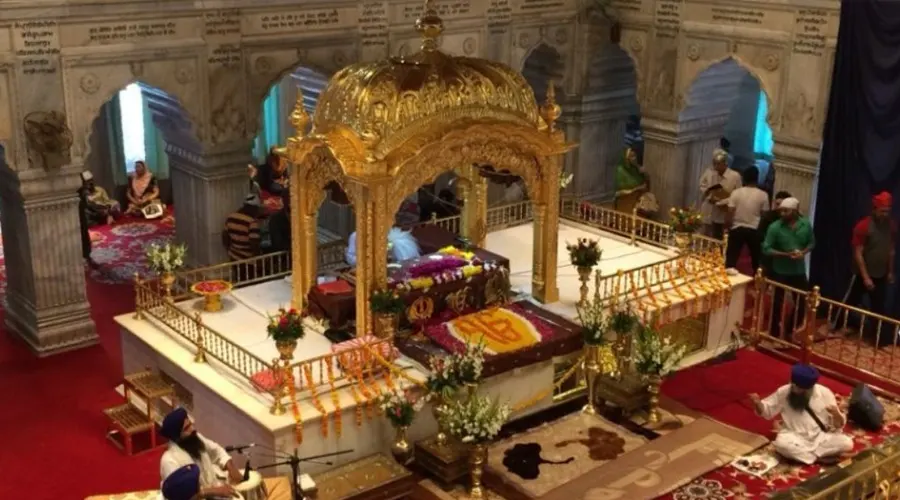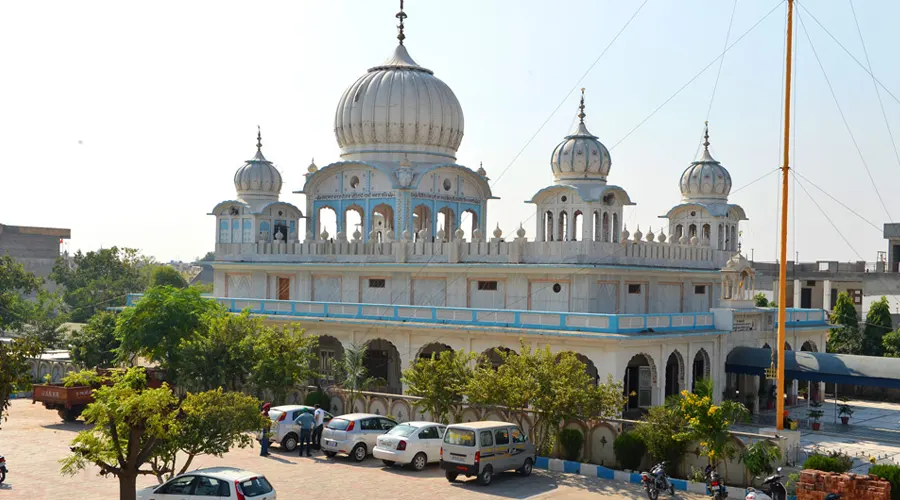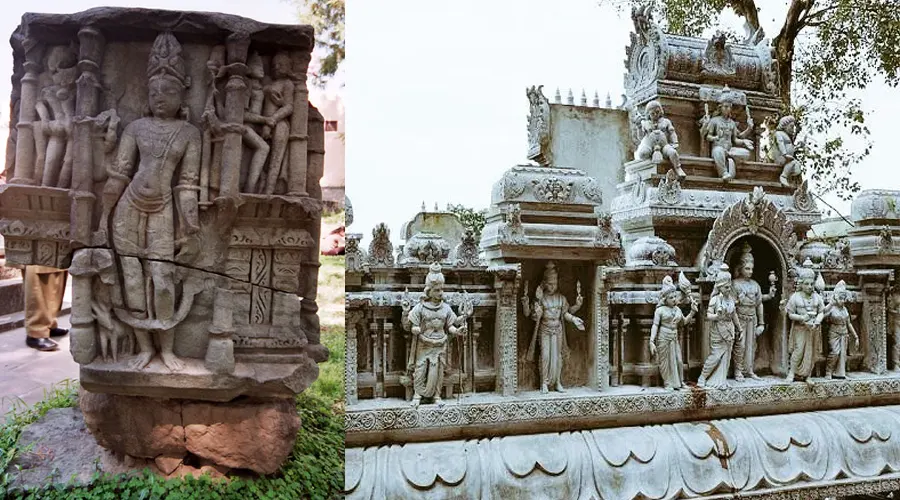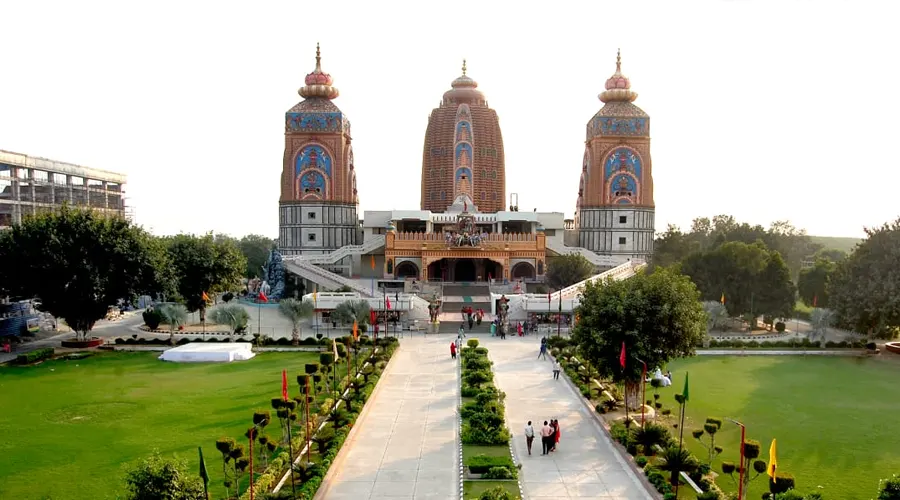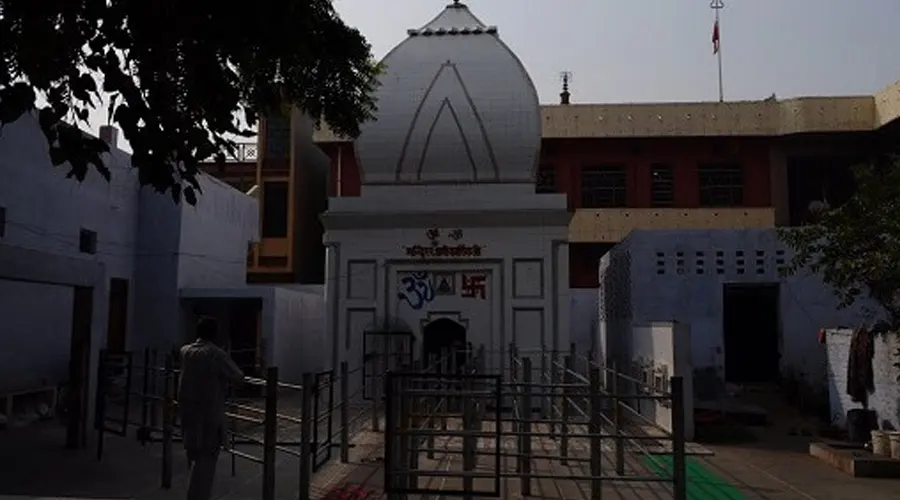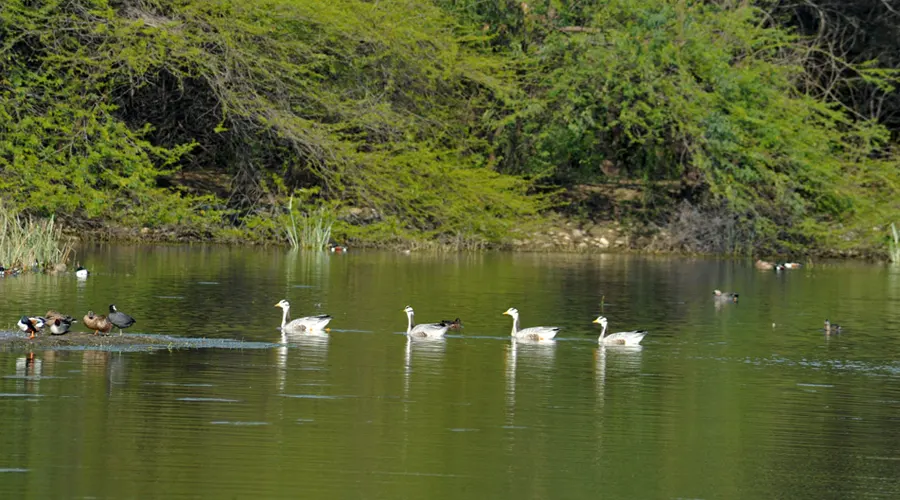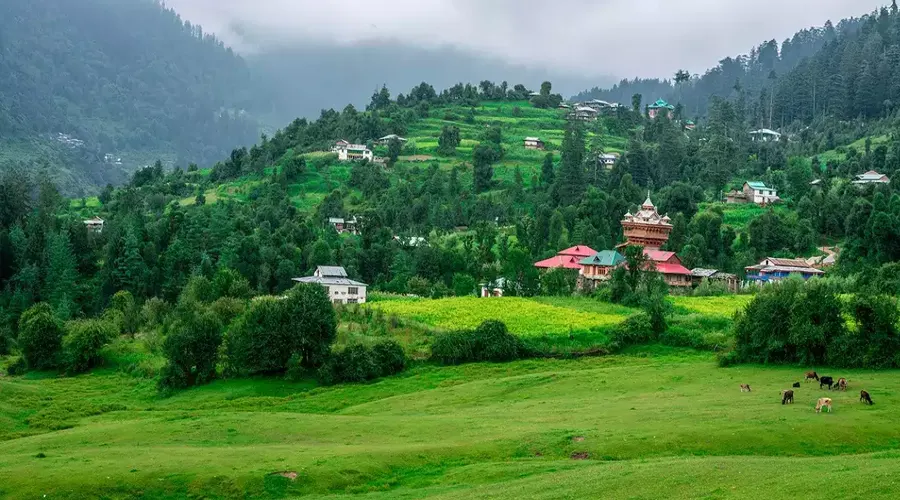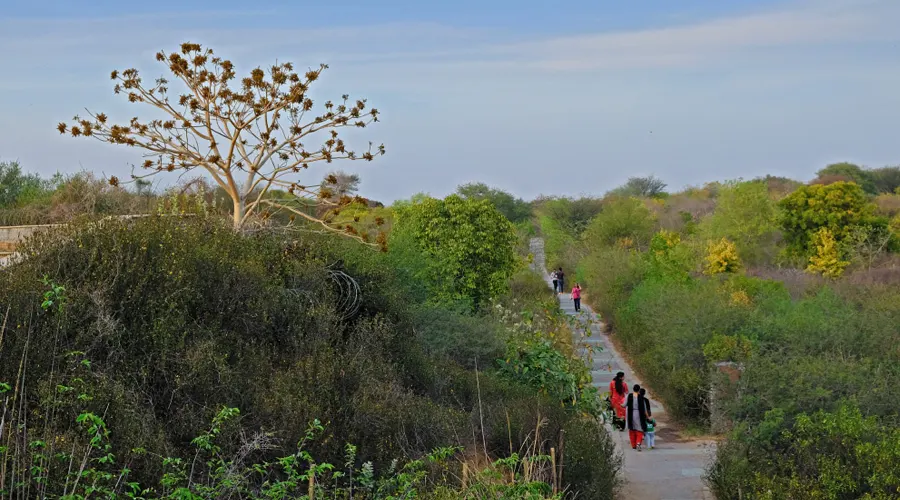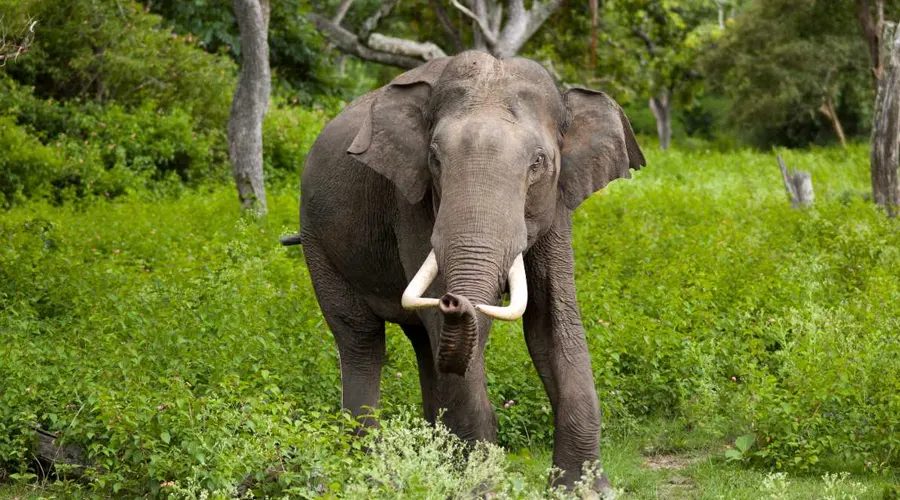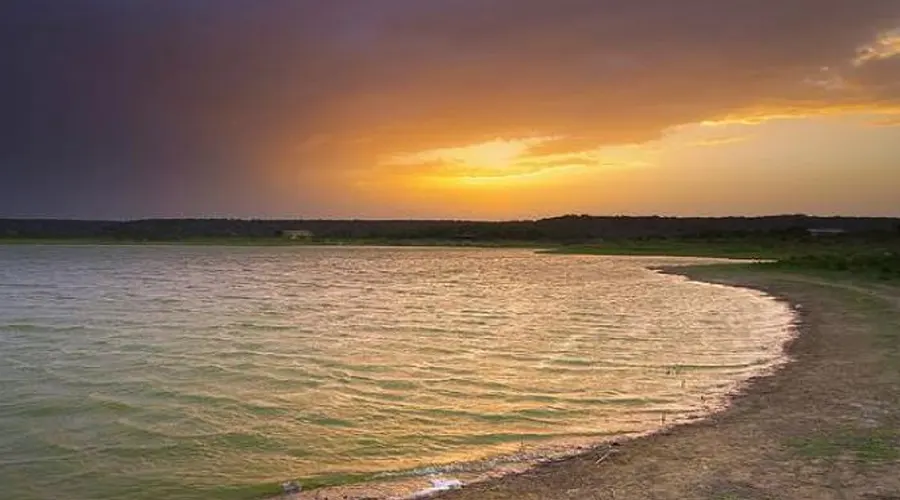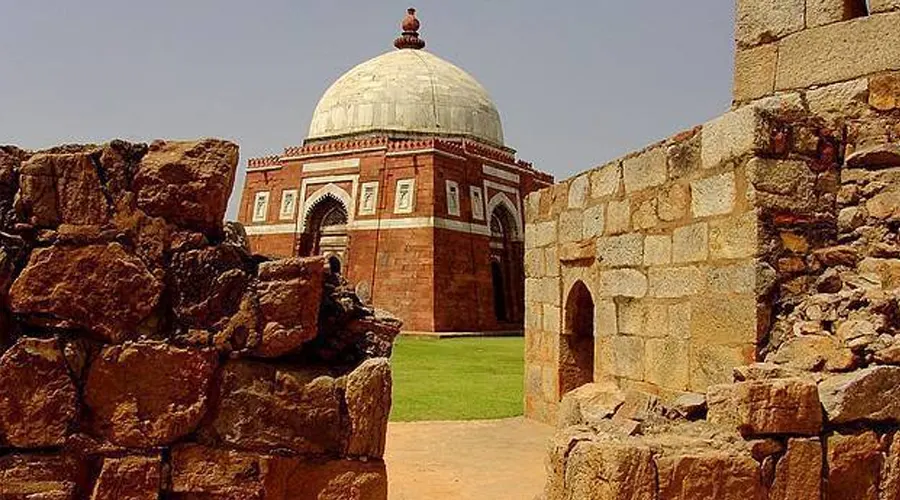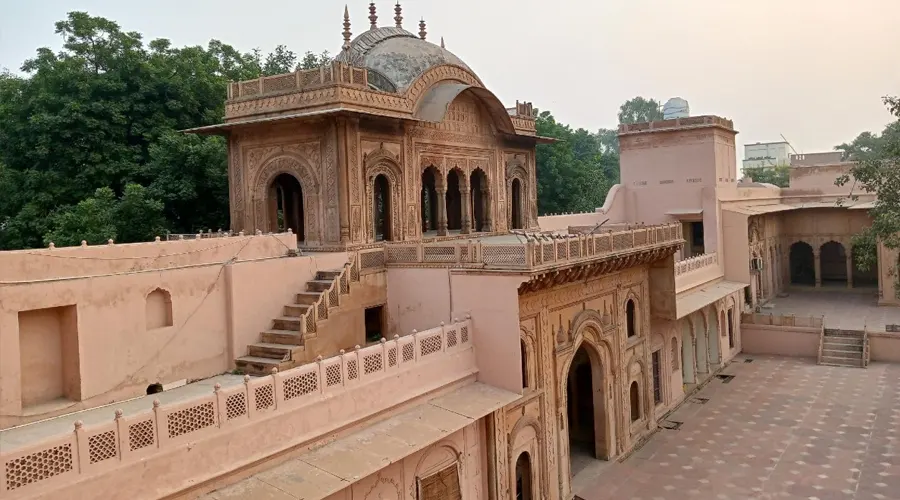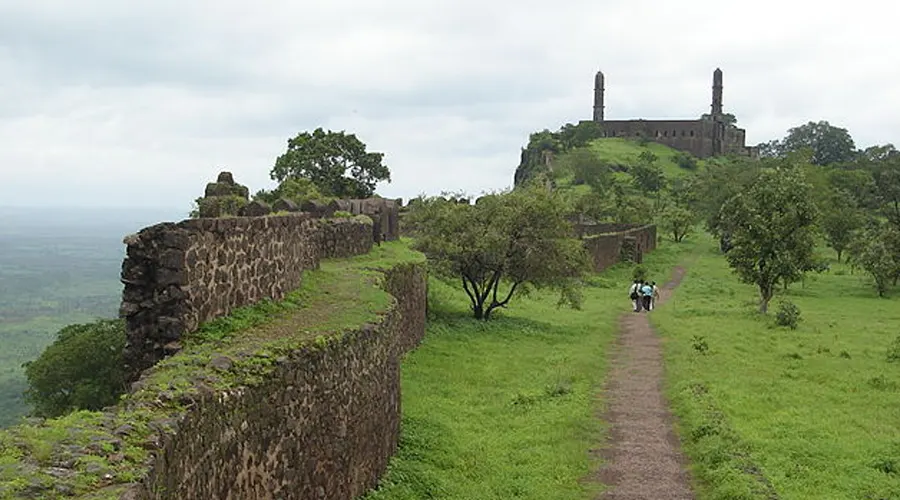Sheikh Chilli's Tomb
This beautiful tomb and the madrasa (school) are associated with the Sufi saint Abdur-Rahim alias Abd-ur-Razak, popularly known as Shaikh Chehli (also pronounced Chilli) believed to be the spiritual teacher of the Mughal Prince Dara Shikoh, the eldest son of Emperor Shahjahan.
The tomb, overlooking the madrasa and standing on an artificial terrace, is octagonal with the entrance in the south. It is built of buff sandstone and is crowned with a pear-shaped dome of white marble standing on a high circular drum. The cenotaph of the saint occupies the center of the chamber, while his grave is located in the lower chamber, which conjoins the madrasa through a narrow gallery.
The madrassa has nine-arched openings on each side of a central courtyard that has in the center a stone masonry tank. John Dawkins, the then collector of Thaneshar, was instrumental in getting the tomb repaired in 1854 AD. The antiquities recovered from the excavations at Harsh ka Tilla and Bhagwanpura (both failing in the district of Kurukshetra) are displayed in two small museums of the madrasa building.
History and Architecture of Sheikh Chilli's Tomb
Established in Circa 17th Century AD, this elegant structure is the eternal resting place of the venerable Sufi saint Abdur Abdur-Rahim. He was popularly known as Sheikh Chilli or Chili and Dara Shikoh, the eldest son of the Mughal Emperor Shahjahan, was a devotee and disciple of this erudite scholar. Moreover, Sheikh Chilli's Tomb is constructed in beige sandstone and has a white marble lofty pear-shaped dome and delicate Parisian overtones that are imbued in this charming edifice.
Additionally, pleasant Mughal gardens surround the mausoleum, along with the mortal remains of the saint's wife which are also present in a smaller tomb. One of the attractive places to visit in Kurukshetra, the building also houses a madrasa and an archaeological museum where antiquities unearthed during excavations at Kurukshetra are exhibited.

